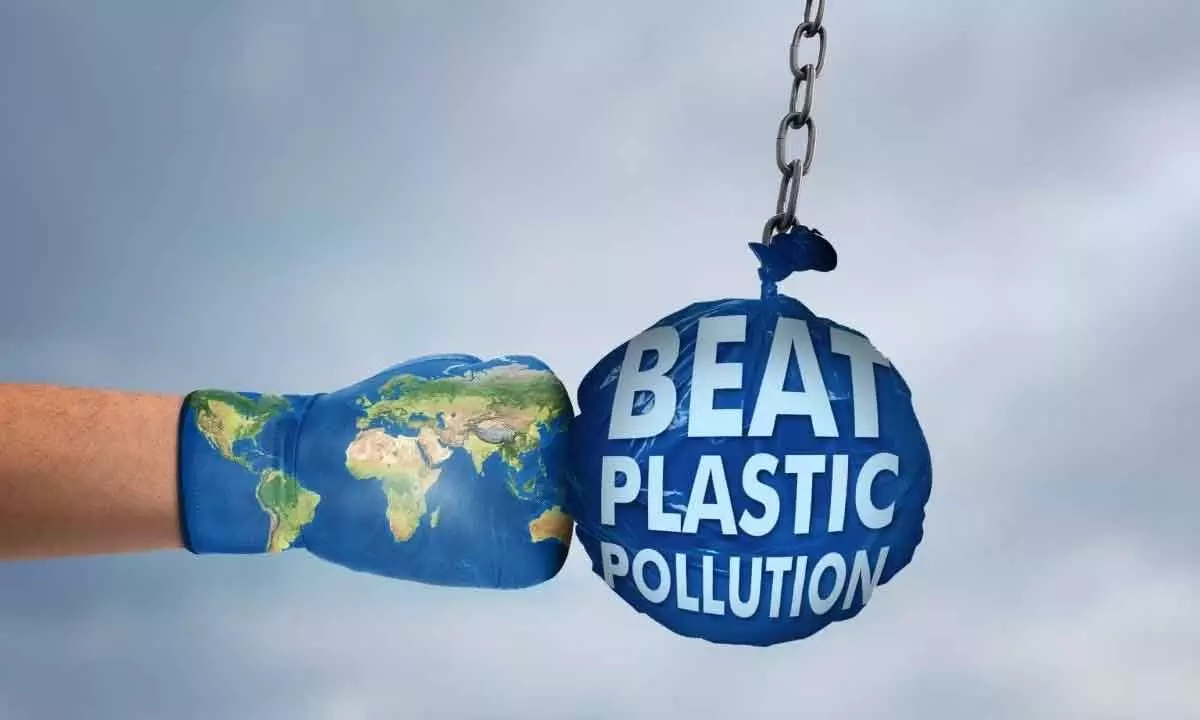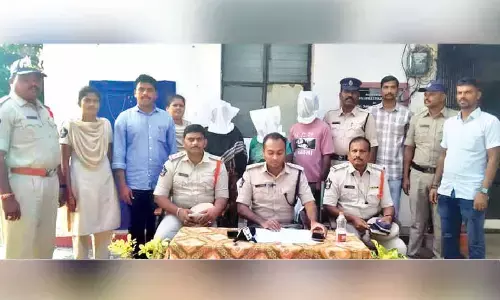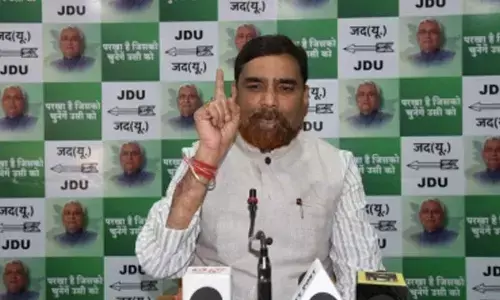Let’s beat plastic pollution

Single-use plastics are still available; no data on how much of it a company generates
♦ The bad news is these regulations are not working. Single-use items are still available and there is a huge confusion on the thickness — measured in microns — allowed under the rules. The Extended Producer Responsibility (EPR) regime is weakened by a lack of transparency and enforcement. For instance, there is no information on the quantity of this plastic material or the waste a company generates
♦ Not only is it based on self-declaration, not enough data is available in the public domain to assess its accuracy or to know what is happening in terms of compliance. Worse, under EPR, companies are required to recycle or reprocess the material they collect only by 2024. The question, then, is what is happening to the plastic waste that is being collected—is it being stored or dumped?
There are reasons in Hindu religion, the God of Creation, Brahma, is considered to be of somewhat lesser importance than the God of Destruction, Shiva. In the past 50-odd years, the world has learnt, to its horror, the problems of long-lasting and non-destructive substances, once considered wonder creations.
Take DDT, which had such a long residence time in the environment that it led to accumulation of the pesticide in the eggs of birds and in the blood of humans. Or take chlorofluorocarbons (CFC), a non-destructive chemical, which literally burnt a hole in the stratospheric ozone layer.
Worse still is carbon dioxide, emitted from the burning of fossil fuels, whose residence time is anywhere between 150 and 200 years in the atmosphere — and this stock of emissions is resulting in catastrophic climate change.
This tidbit of religion and science is important in the context of this year’s World Environment Day that was marked with the theme #BeatPlasticPollution. Plastic is another one of our wonder substances—an all-pervading essential in our lives that is used for almost everything, from piping water to packing milk to chips.
It is this very characteristic of plastic that has become a bane of our environment. The waste of plastic has become that sign of the Anthropocene. Worse, massive quantities of plastic litter pollutes oceans and also enters the food chain through fish.
In India, the Union Ministry of Environment, Forest and Climate Change has two recent regulations for managing plastic waste. It has notified a ban on 19 items identified as “single-use plastic”.
For other plastic waste, including packaging material, it has brought in the Extended Producer Responsibility (EPR) rules. Under EPR (at least in theory), companies are required to take back the plastic waste they generate, based on pre-determined targets, and then either preprocess it or dispose it off safely.
The bad news is these regulations are not working. Single-use items are still available and there is a huge confusion on the thickness — measured in microns — allowed under the rules. The epr regime is weakened by a lack of transparency and enforcement. For instance, there is no information on the quantity of this plastic material or the waste a company generates.
Not only is it based on self-declaration, not enough data is available in the public domain to assess its accuracy or to know what is happening in terms of compliance. Worse, under EPR, companies are required to recycle or reprocess the material they collect only by 2024. The question, then, is what is happening to the plastic waste that is being collected—is it being stored or dumped?
There is good news as well. While the regulations are inadequate, city governments are beginning to go beyond to find solutions. Many states and Union Territories have banned the use of all plastic carry bags. This has helped enforcement.
Many cities are seriously beginning to practice source segregation, which then means the dry waste (including plastic) can be reprocessed. They are either building material-recovery facilities (MRF), where the plastic that can be recycled is sorted and separated from the waste, or are directly working with the informal sector to take out this “valuable” fraction of waste. Then, they are sending the non-recyclable plastic waste for incineration to cement plants (where possible) or for use in road construction.
But there are huge challenges and this is where we must work. First, we must get out of this quagmire of defining “single-use” plastic. The fact is most plastic usage, particularly for packaging, is single-use. We pack and then use and throw. It is, therefore, hard to understand why we would restrict the relatively minor items of use and then deploy our grossly inadequate regulatory agencies to enforce the ban.
Instead, the focus should be based on “recyclability” of plastic waste. This is where the real politics kicks in. It is well understood that what is difficult to collect, cannot be sent for recycling. It is also known that certain plastic products, including those that are multilayered, are difficult to recycle.
This is why the 2016 Plastic Management Rules stipulated a phaseout of multilayered plastic, including those used for packing gutka or chips, by 2018. But the rules were later amended to say that this would only be done, if the multilayered plastic was “non-recyclable” or “non-energy recoverable”. This was done knowing fully well that multilayered plastic is what is found in litter and landfills because this waste has no value and it is difficult to collect and even more difficult to reprocess.
Second, we need to focus on the waste warriors. We must understand that if we are able to manage any plastic waste, it is because of the millions of people working in the informal sector who manage to make value out of our refuse. It is time we understood this so that we become responsible for our own waste; not use what is banned today and ask for more to be banned tomorrow, because we must and can live without plastic.
(Writer is Director General of CSE and editor of Down To Earth, an environmentalist who pushes for changes in policies, practices and mindsets)

















